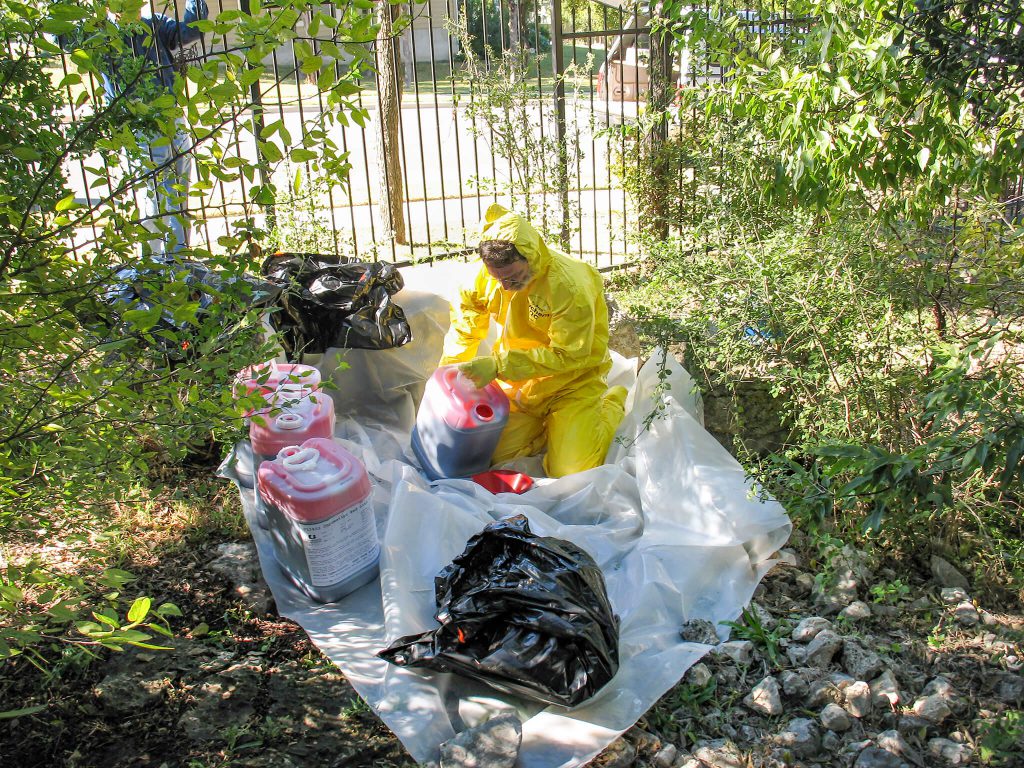Aquifer Studies
Karst aquifers are among the most productive water supplies in the world. They are also the most vulnerable to overuse and pollution. Studying these aquifers and properly managing them isn’t easy. Karst aquifers are the world’s most complex type of aquifer. Specialized research methods and expert knowledge are necessary to apply those methods and understand the results. NCKRI has that expertise.
There is no one-size-fits-all technique for studying karst aquifers. Here is a summary of a few specialized methods NCKRI uses in evaluating karst aquifers. Depending on the aquifer and situation, some studies may use only one method while others may combine several, including methods not listed below.
Dye Tracing
The most famous and visually spectacular karst research technique involves putting a non-toxic dye into a well, cave stream, surface stream, or other location where water sinks or flows underground. The precise amount of dye and the time of release are recorded carefully, as are the time, amounts, and locations where the dye is later found. These results are drawn as maps of underground flow paths, but they also record the flow speed, dilution, and other important information for aquifer management. The amount of dye is calculated to minimize the odds of discoloring water emerging from a well or spring. Instead, the dye is measured by laboratory analysis of the emerging water. While fluorescent dyes are used most commonly, NCKRI uses other tracers too when needed.
Water Flow and Chemistry
Nearly all aquifer research measures water levels in wells and flows from springs. Many studies will also examine the chemistry of the groundwater. These measurements and analyses occur in studying karst aquifers too. The difference with karst aquifer studies is in how the information is collected and interpreted. Karst aquifers are triple-permeability systems, which means water flows very slowly, at slow to moderate speeds, and very quickly, all at the same time, depending on which type of flow path the water follows. Consequently, some karst groundwater is underground for millennia while other water may only spend a few hours in the same karst aquifer. This has huge implications on how pollutants move through a karst aquifer and how much water is available for drinking. NCKRI understands how to identify and monitor each type of karst flow system and knows how to evaluate the data. With this expertise, a detailed picture of the aquifer can be developed.
Cave Investigations
Caves are the natural pipelines of karst aquifers. They are created by water moving from a recharge point, where the water enters the ground, to a discharge point, where the water flows to the surface from a spring. Caves are neglected in most aquifer studies—but not by NCKRI. A cave’s shape, pattern, sediment, speleothems, airflow, and even its biology often provide deep insights into the karst aquifer that are not available any other way.

Photo courtesy: NCKRI Staff Michael Jones. 
Photo courtesy: NCKRI Staff George Veni.